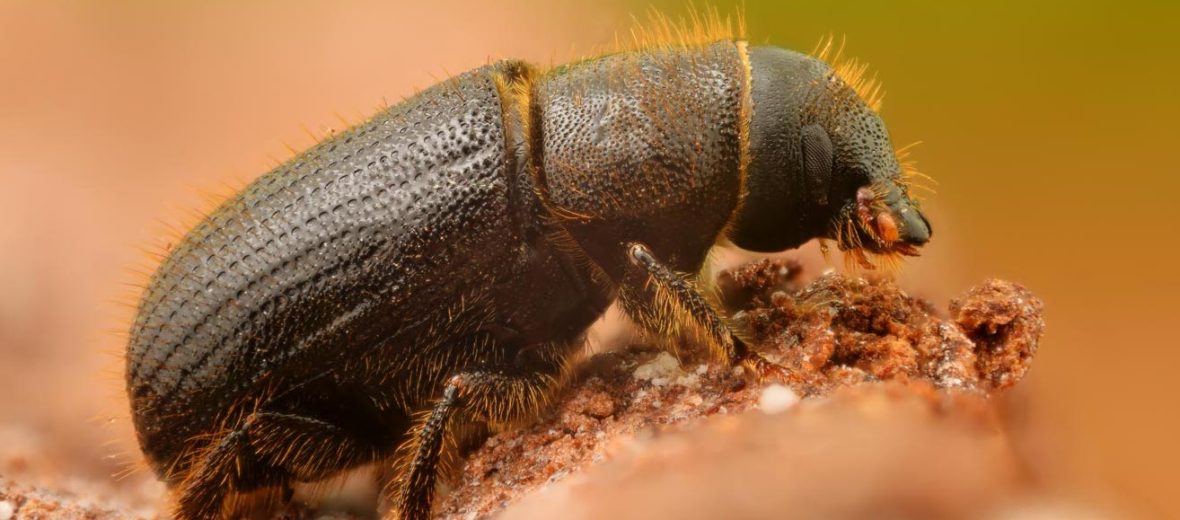
The bark beetle is a wood boring beetle that can be found in North America, Central America, South America, Asia, Europe, and Africa. These pests make a living out of boring into the phloem of various trees, bringing with them disease and eventual death of the infested trees. Some bark beetles also attack fruits, berries, and soft plants; causing equal damage and incredible economic and habitat loss and damage. Bark beetles are not currently evaluated by the IUCN.
First the Stats…
Scientific name: Scolytinae
Length: Up to .125 inch
Lifespan: Up to 1 year
Now on to the Facts!
1.) These insects are a specialized clade of the true weevil family.
2.) There are approximately 6,000 species of bark beetles identified, to date.
3.) They can be found from deserts to rainforests, as well as other forested regions.
4.) They not only damage trees and plants by boring into them, but they also carry with them Dutch elm disease fungi. If the boring doesn’t do the job of killing the tree or plant, the fungi will.
5.) Like other beetles, they go through 4 stages of development: egg, larvae, pupae, and adult.
But wait, there’s more on the bark beetle!
6.) The time it takes to reach adulthood depends on the ambient temperature. The warmer the temps, the faster they develop.
7.) Adults bore into the bark and lay their eggs in the phloem of the host tree or plant. The eggs hatch and the larvae get to work, boring through the phloem, causing damage and potential death to the host (if enough larvae are present).
Did you know…?
In 2010, an estimated 129 million trees died in just the California national forests alone because of bark beetles. That equates to approximately 30 trees per minute! However, drought also plays a role in these figures.
8.) While many bark beetles attack living trees, a great many bark beetle species feed only on weakened, dying, or dead fir, spruce, and hemlock trees.
9.) Bark beetles are preyed on by woodpeckers and other birds, long-legged flies, and certain species of phoretic mites.
10.) The braconid wasp is known to parasitize the elm bark beetle.
But wait, there’s still more on the bark beetle!
11.) They cause damage and potential death to their host after enough of the phloem is consumed, which girdles the tree, cutting off the spread of water and nutrients.
12.) Bark beetles cost the timber industry upwards of $43 million per year in lost or damaged timber. This cost trickles down to the final consumer, causing higher prices for consumers which look to purchase wood-based products.
Now a Short Bark Beetle Video!
Be sure to share & comment below! Also, check out the Critter Science YouTube channel. Videos added regularly!
Want to suggest a critter for me to write about? Let me know here.



